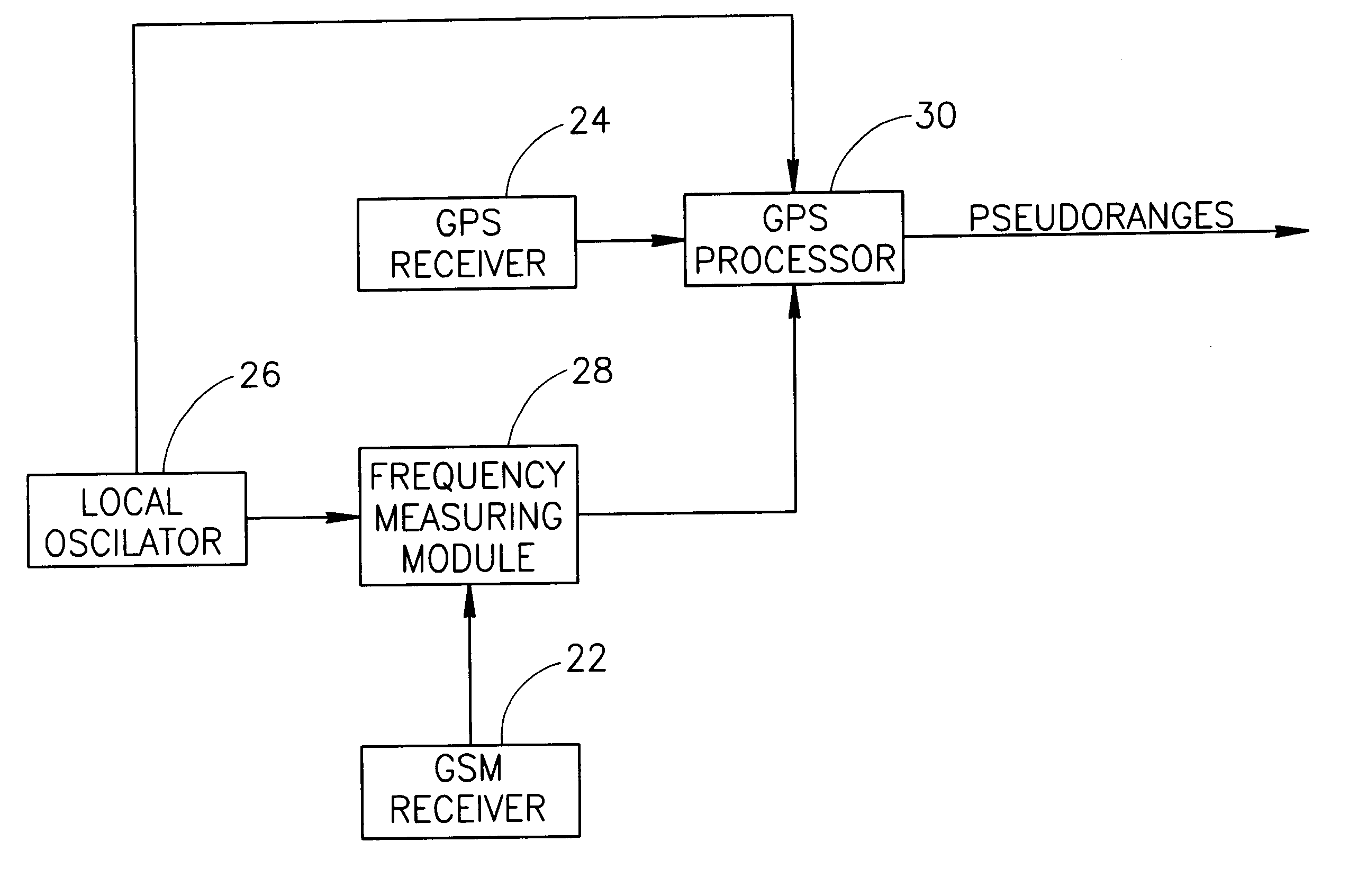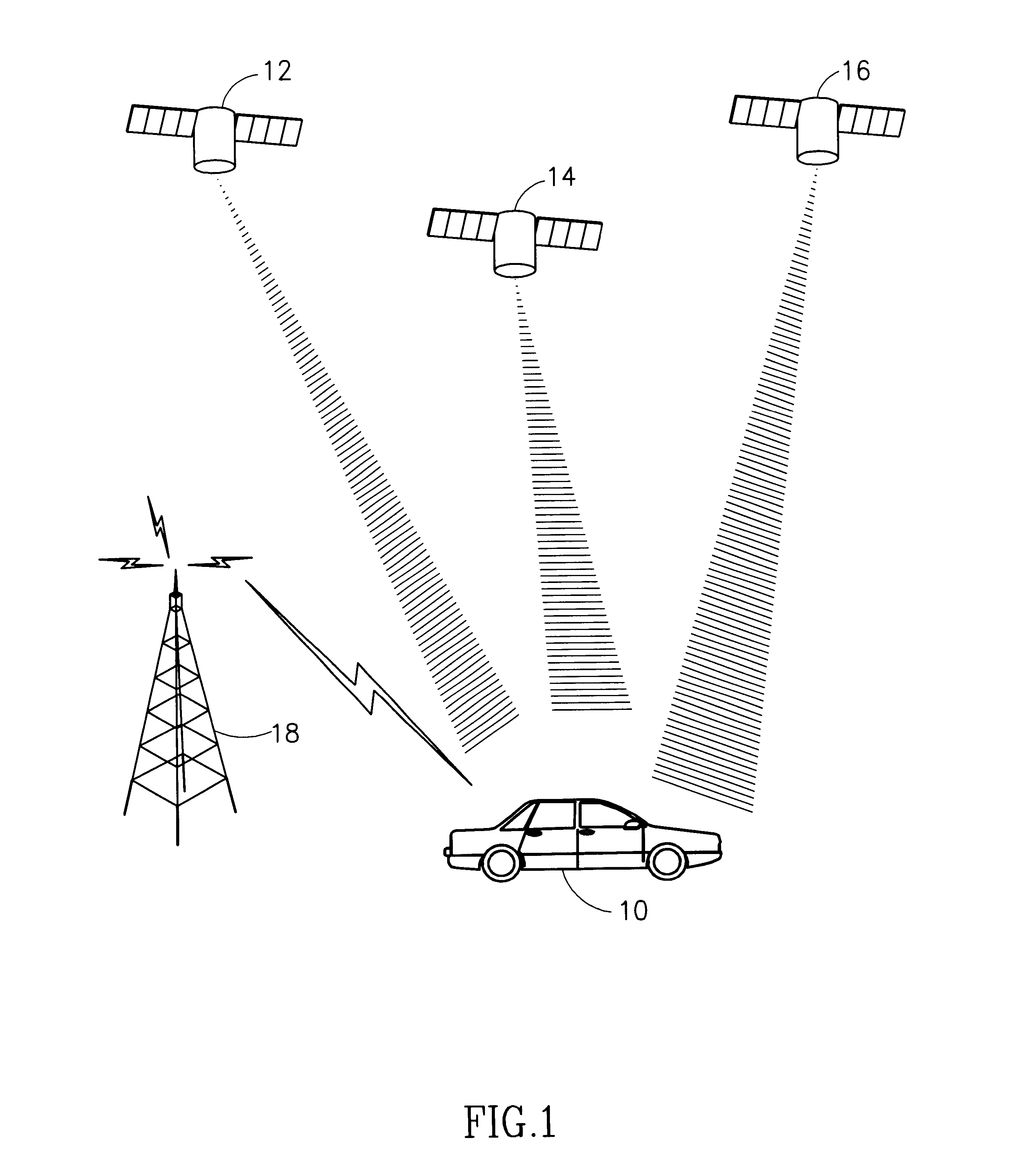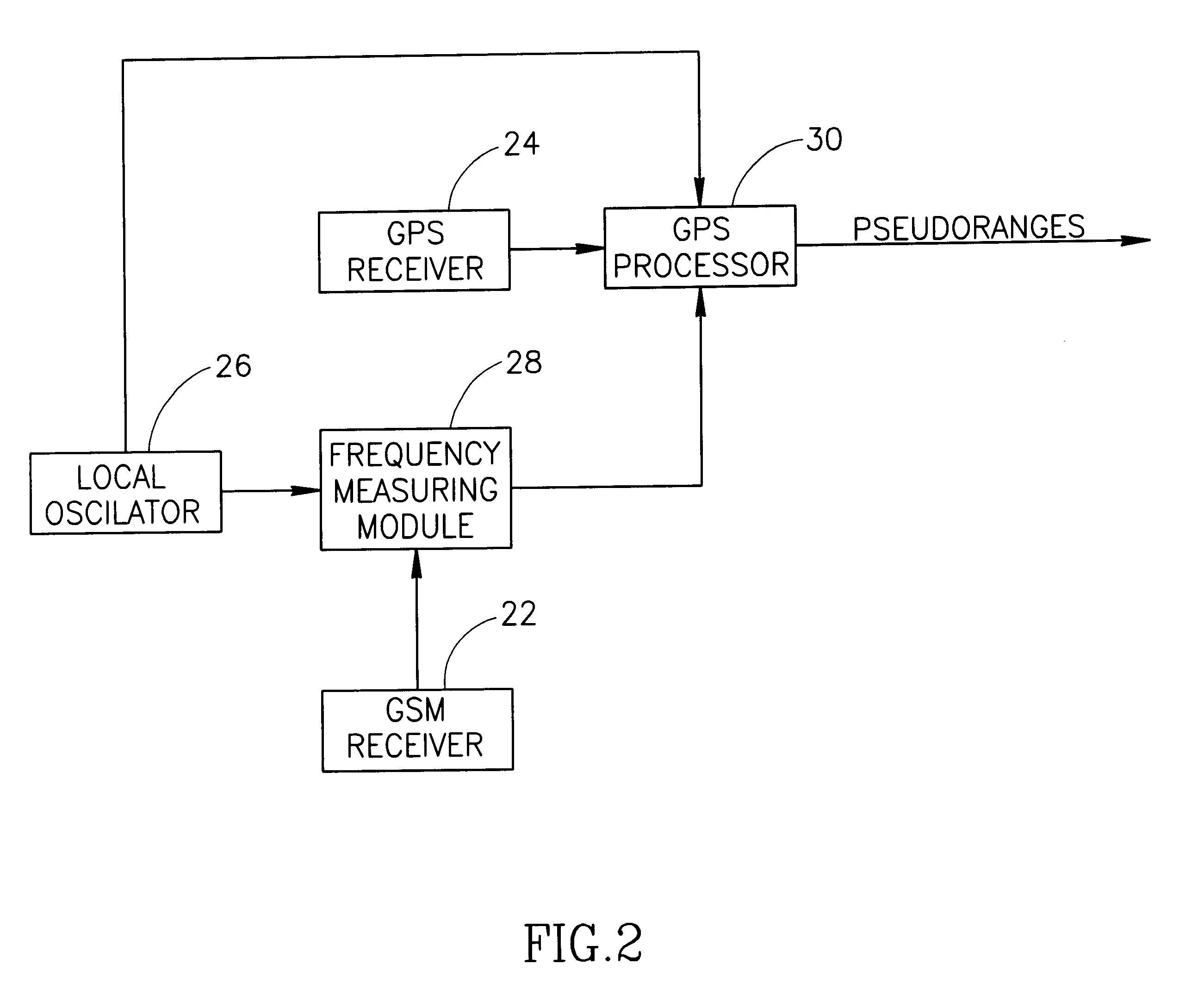Enhanced GPS receiver utilizing wireless infrastructure
a wireless infrastructure and receiver technology, applied in the field of gps receivers, can solve the problems of excessively long time spent on obtaining reliable correlation, reducing the feasibility of achieving good correlation between stored replicas and detected signals, etc., and achieve the effect of improving the accuracy of pseudorange calculation
- Summary
- Abstract
- Description
- Claims
- Application Information
AI Technical Summary
Benefits of technology
Problems solved by technology
Method used
Image
Examples
Embodiment Construction
In order to perform location measurements, a standard commercial GPS receiver utilizes data of several satellites of the Navstar constellation concomitantly. According to the present invention, a typical data-source layout of a MU (mobile receiver unit) includes at least two types of data sources. FIG. 1 to which reference is now made, describes a MU receiving data from satellite sources 12, 14, and 16. According to the present invention, the locator integrated with a MU receives signals from a cellular network source 18 out of which synchronization data is extracted.
Correcting for Local Clock Frequency Shift
The local oscillator of the MU provides reference frequency for the time dependent processes associated with the location measurements. The local oscillator however exhibits drift characteristics which potentially impair the accuracy of the measurements.
According to the present invention, the local clock frequency shift is corrected for by referencing the MU's local oscillator t...
PUM
 Login to View More
Login to View More Abstract
Description
Claims
Application Information
 Login to View More
Login to View More - R&D
- Intellectual Property
- Life Sciences
- Materials
- Tech Scout
- Unparalleled Data Quality
- Higher Quality Content
- 60% Fewer Hallucinations
Browse by: Latest US Patents, China's latest patents, Technical Efficacy Thesaurus, Application Domain, Technology Topic, Popular Technical Reports.
© 2025 PatSnap. All rights reserved.Legal|Privacy policy|Modern Slavery Act Transparency Statement|Sitemap|About US| Contact US: help@patsnap.com



